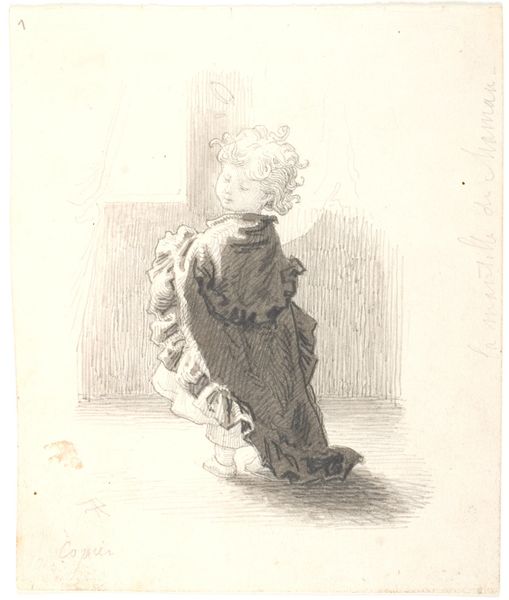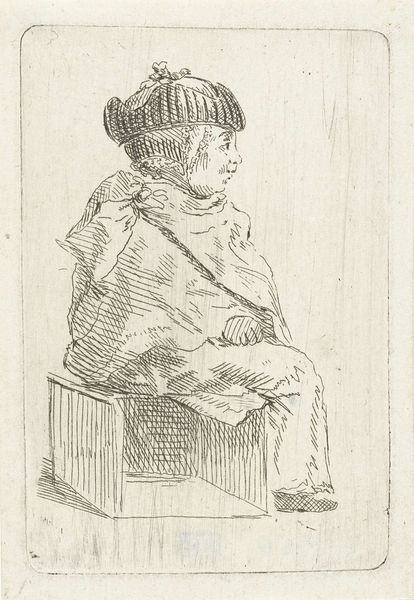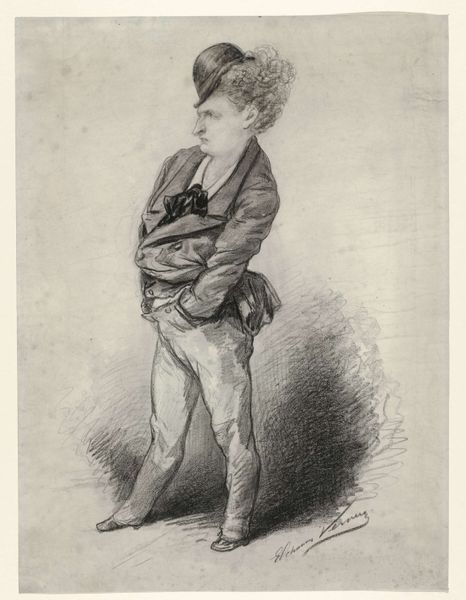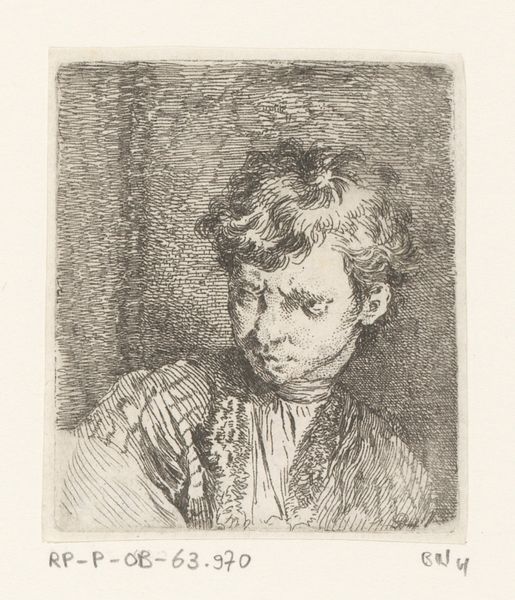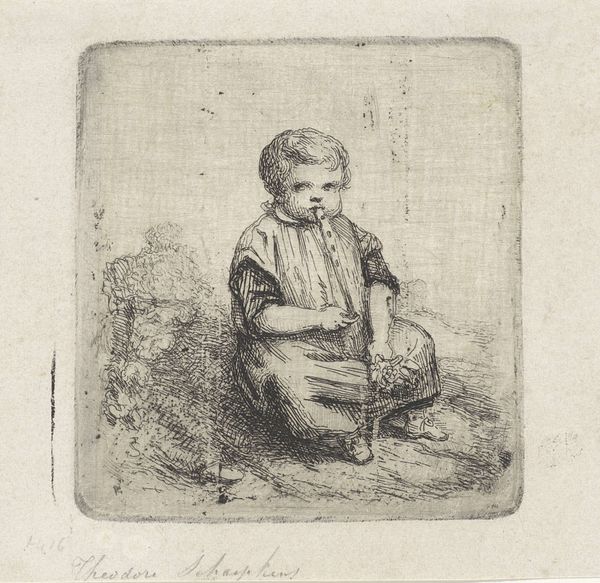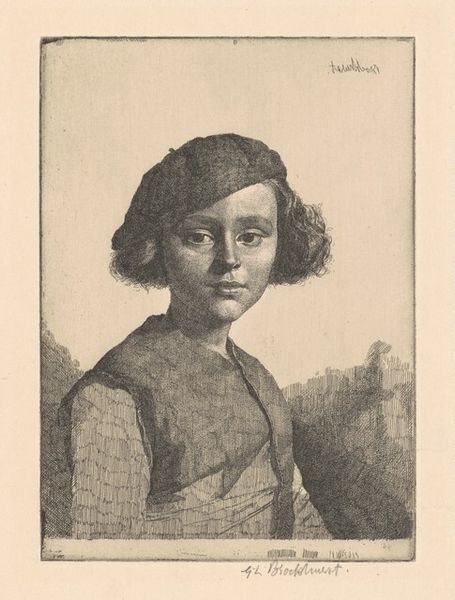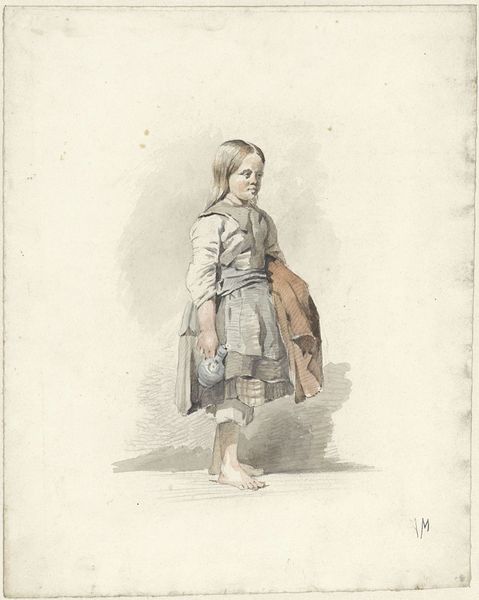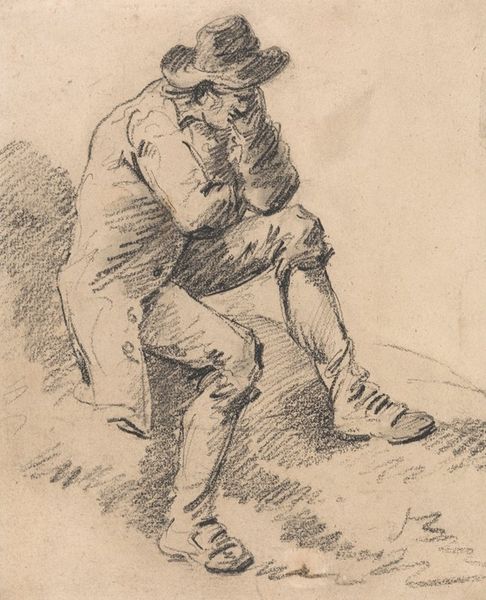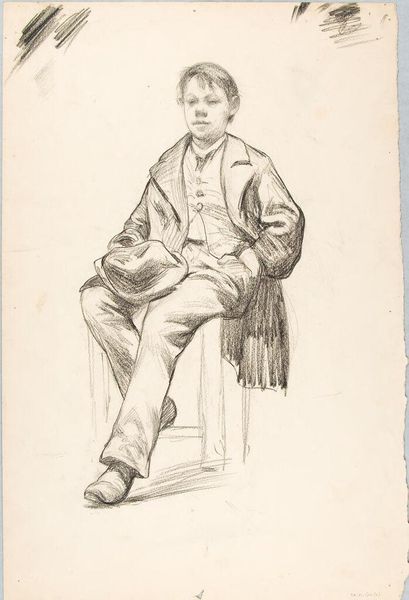
drawing, print, etching
#
portrait
#
drawing
# print
#
etching
#
figuration
#
pencil drawing
#
line
Copyright: Public Domain: Artvee
Editor: We're looking at "Seymour Seated," an etching by James Abbott McNeill Whistler from around 1858. There’s a delicacy to the lines, but also a somewhat melancholic mood. What stands out to you? Curator: Immediately, I note the artist’s masterful control of line. The density and direction vary considerably to create form and shadow. Consider the scribbled ground against the finer lines of the face. What effect does this juxtaposition create? Editor: It almost feels like the figure is emerging from a chaotic space. It separates her, gives her dimension in this fairly spare composition. But what about the subject’s positioning - the lines making up the base that the figure sits on run right off the edge of the paper. Curator: Precisely! It leads the eye and is meant to reinforce depth. Note also how the limited tonal range emphasizes texture through contrasting patterns of lines, establishing form, rather than relying on light. Editor: So the focus isn’t so much on replicating a realistic scene, but exploring the possibilities within the medium itself? Curator: Exactly. Consider the economy of the strokes which defines each element. See how the hair is treated, almost a mass of dark, versus the subtle, lighter touch on the child's features. Are you picking up on the visual conversation between different parts of the picture? Editor: Yes, and thinking about line and shape separate from what they represent makes me see the piece in a completely different way! Curator: Good. To perceive the elements and principles that build structure helps one better grasp all art, not only representationally, but conceptually, too.
Comments
No comments
Be the first to comment and join the conversation on the ultimate creative platform.

